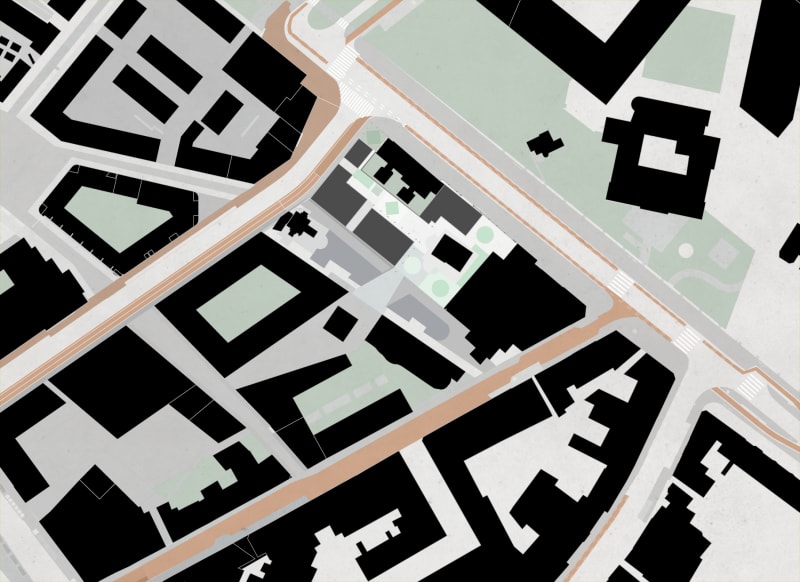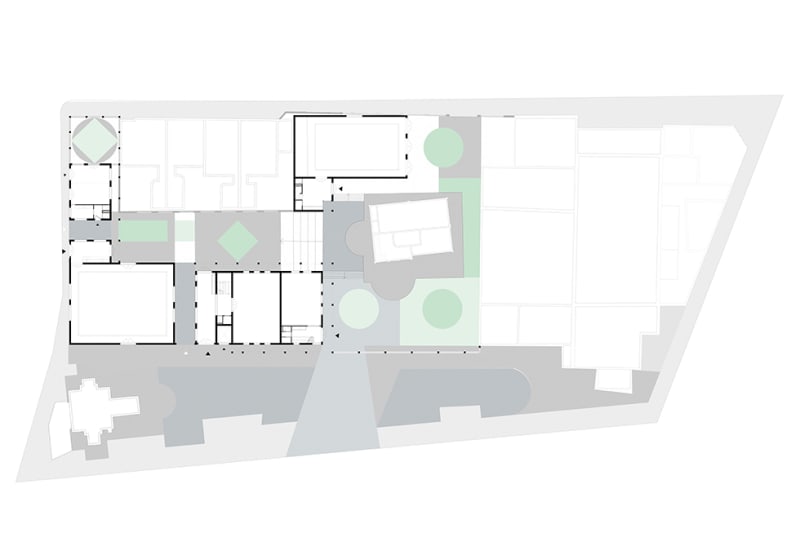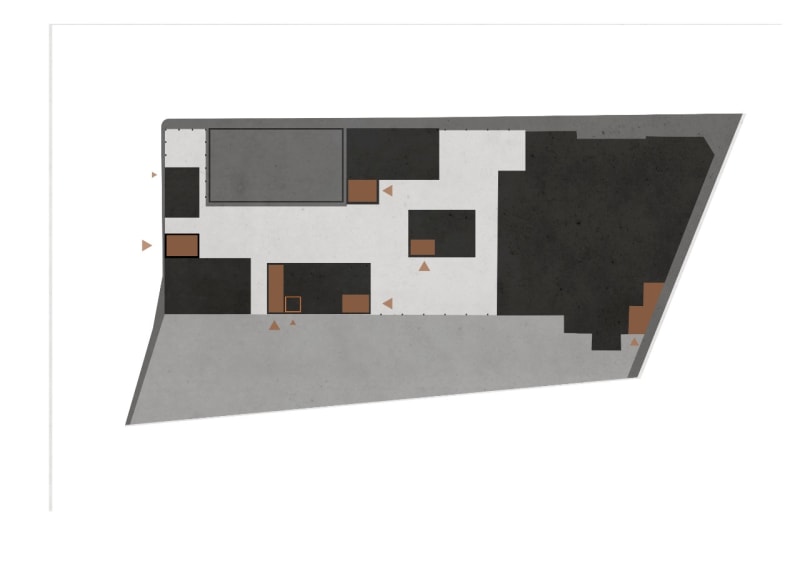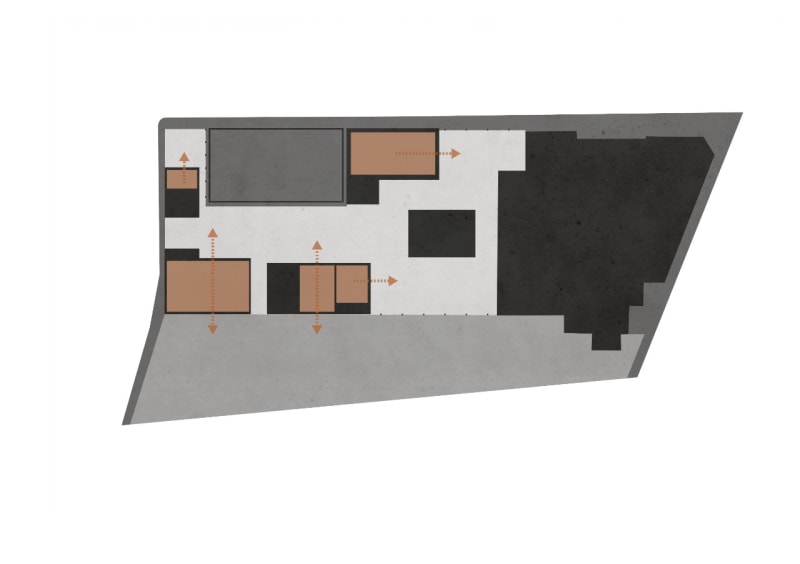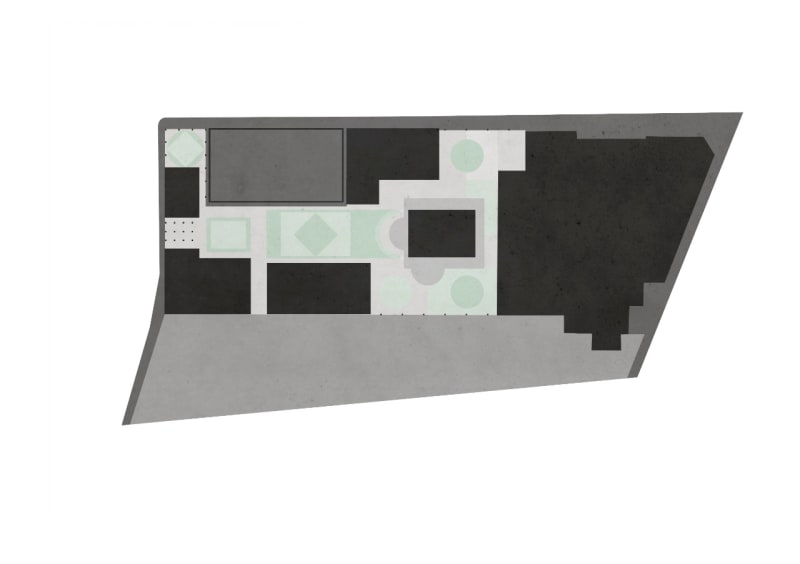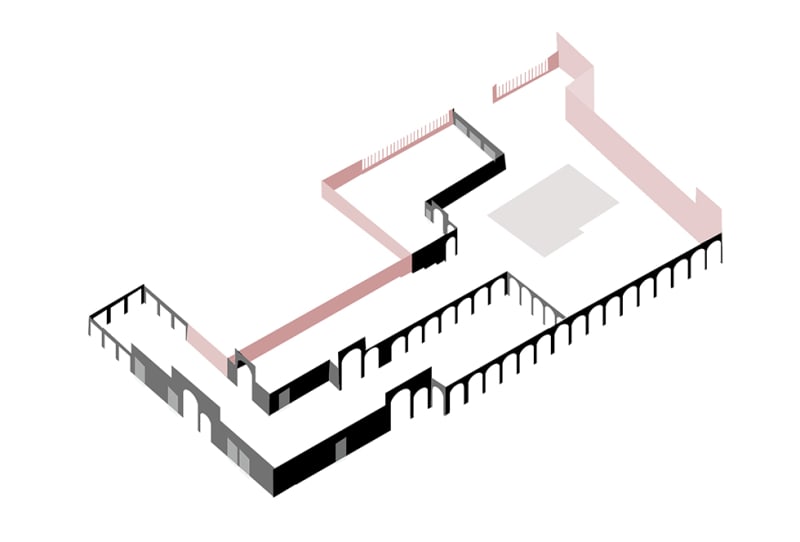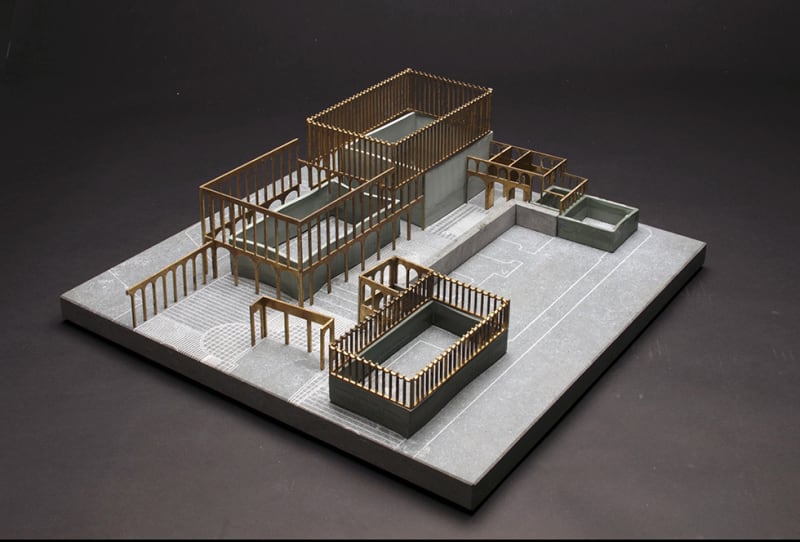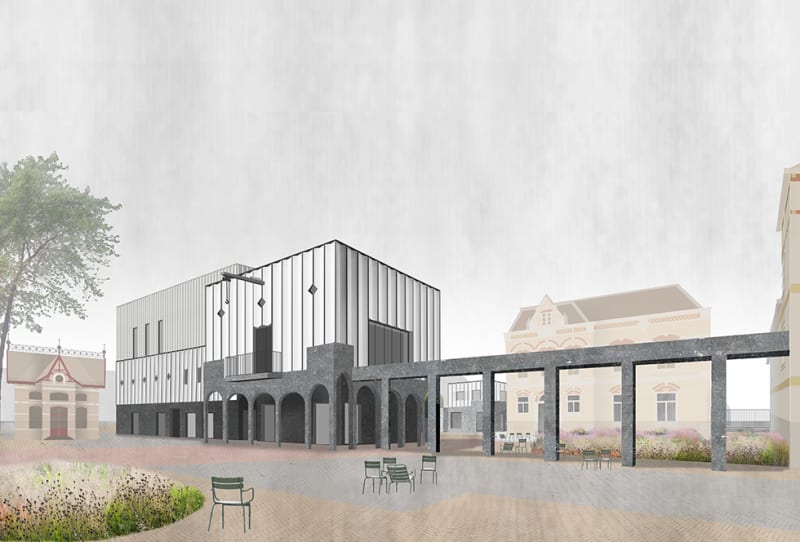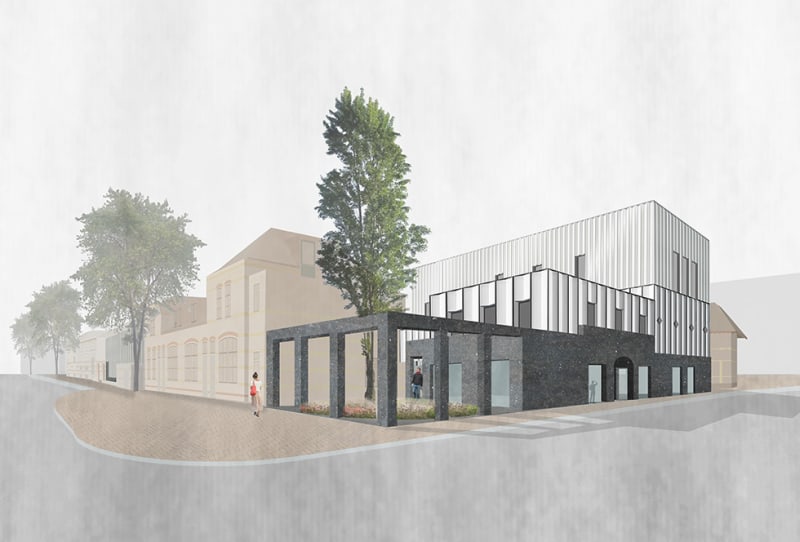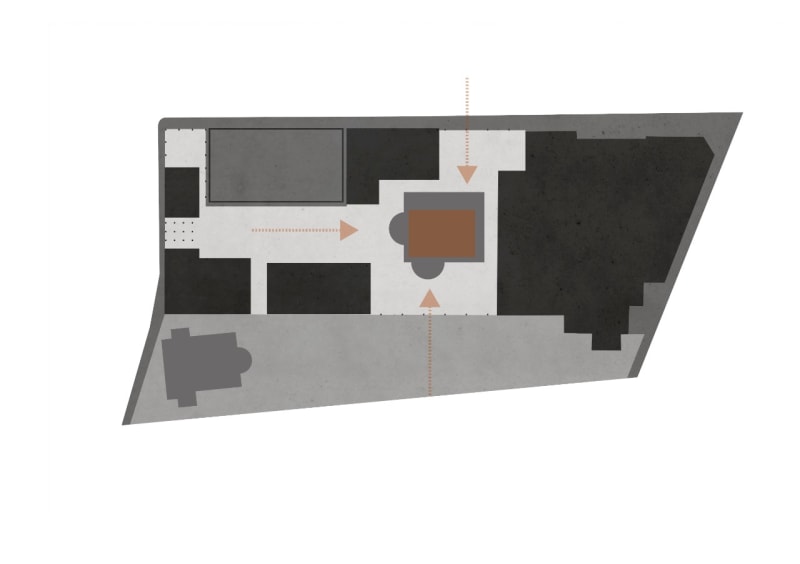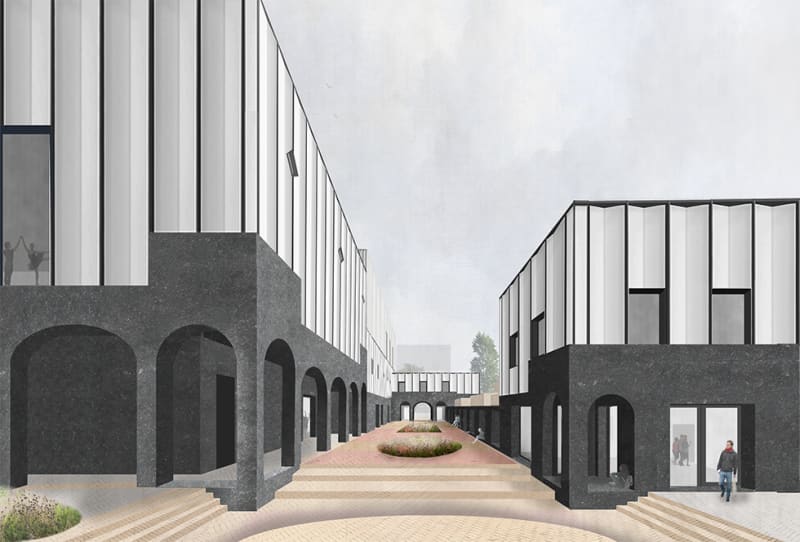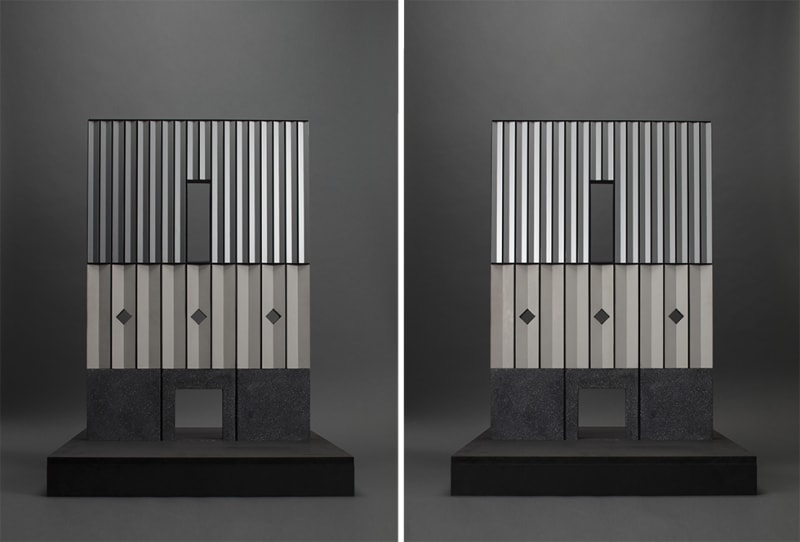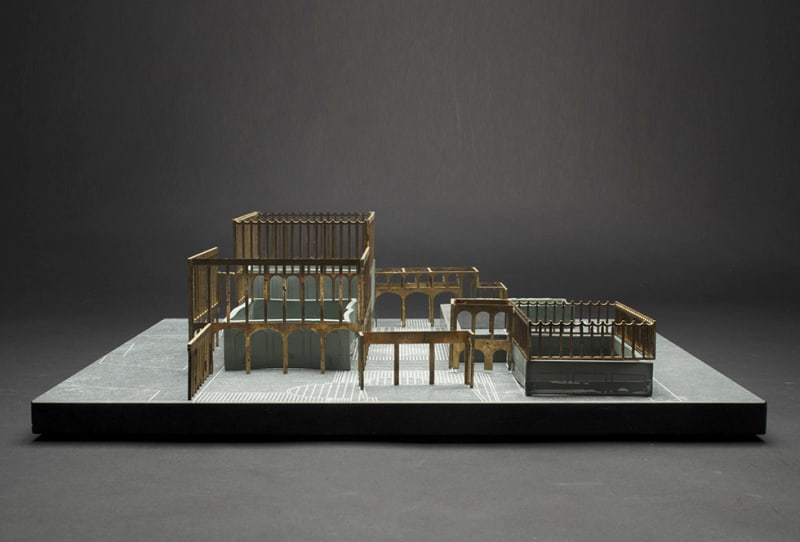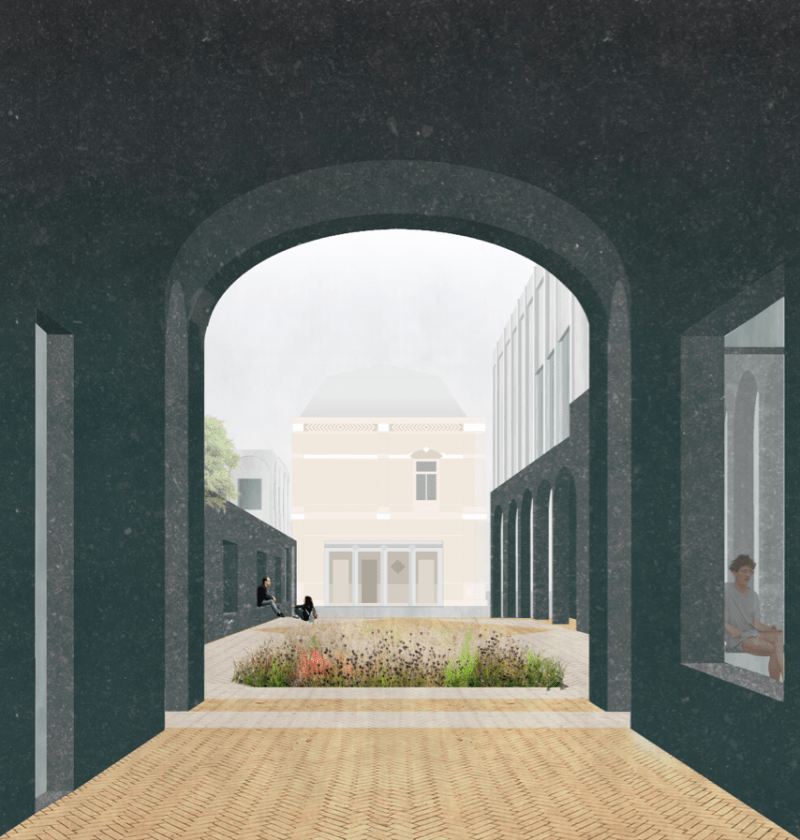Theatre Studio’s Groningen
The ‘art yard’ is located on the former CiBoGa site in Groningen. This former industrial zone has been designated as a cultural precinct. The ‘art yard’ will be an addition to the former machine factory which already is a cultural home. The auditorium forms the heart of the traditional theatre. This big space is surrounding by support spaces – foyer, technical spaces, theatre café, rehearsal spaces, storage and so on. The ‘art yard’ is expressly not a public theatre, but a collection of support spaces. As rehearsal rooms, dressing rooms and offices for four dance- and theatre companies.
That is why the focus of this design is not the theatre auditorium but the public space. The public interior garden, a public Hortus Conclusus, forms the main connecting space, inspired by Sebastiano Serlio’s central perspective dating from the period of classical amphitheatres. The public interior garden is surrounded by the four companies and connects with the ‘urban chain’ a necklace of small squares, streets, canals and courtyards. The succession of various urban spaces extends through the building and forms part of both ‘the building’ and the urban fabric of Groningen. The ‘art yard’ with its public space as a theatre, as a collection of interiors.
By definition, the Hortus Conclusus is closed, and is typically surrounded by fencing, a cloister or an arcade. The gas factory was also originally an enclosed site, divided from the urban fabric by a wall. Typologically, the wall both connects and divides, and it forms the basis for the building.
Public passageways and entrances are highlighted by extending the existing wall, varying it in height, and articulating it with openings and colonnades. The central amphitheatre acts as a central public space of gathering, positioned between all companies. Owing to its public character, it also connects with the surrounding urban fabric.
The new building links up with the existing buildings by responding to the wonderfully specific volumetric compositions. The new building relates to its context by engaging in dialogue through details.

